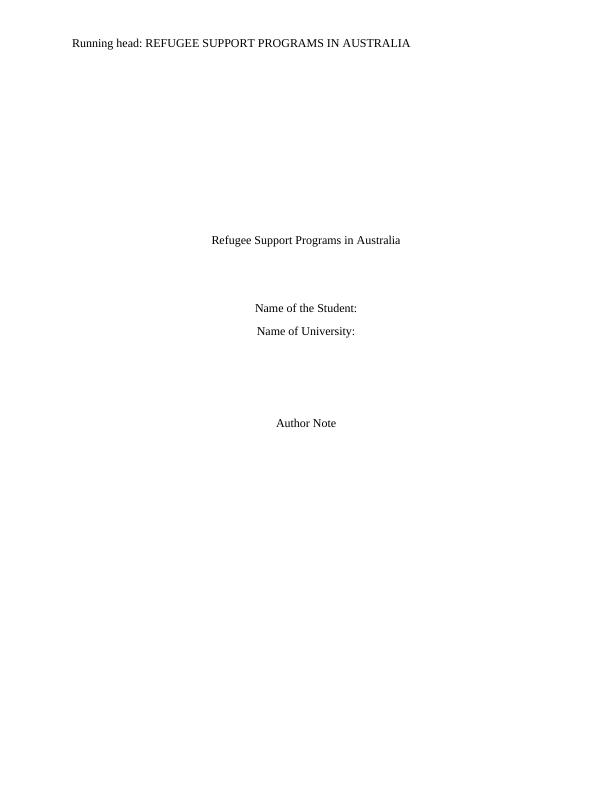Refugee Support Programs in Australia Case Study 2022
Examine a social need in any one of the following sectors in Australia: Domestic Violence, Refugee Support. The essay should include a clear articulation of the social need, analysis of relevant socio-economic determinants, and analysis of relevant historical and current community responses/policies/industrial developments in the Australian context.
Added on 2022-09-21
Refugee Support Programs in Australia Case Study 2022
Examine a social need in any one of the following sectors in Australia: Domestic Violence, Refugee Support. The essay should include a clear articulation of the social need, analysis of relevant socio-economic determinants, and analysis of relevant historical and current community responses/policies/industrial developments in the Australian context.
Added on 2022-09-21
End of preview
Want to access all the pages? Upload your documents or become a member.



